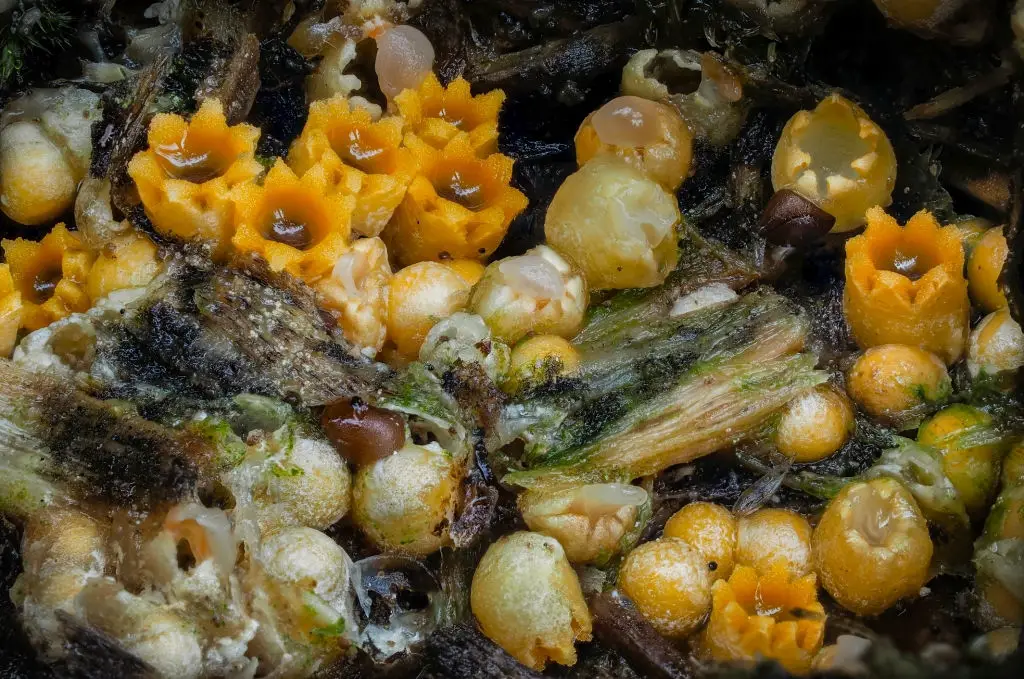There are several types of fungus and mushrooms that a gardener may have to deal with while gardening. However, most gardeners are not aware of the popular types of fungus in mulch which makes things tougher for them to understand. So, what types of fungus and mushrooms grow in a mulch?
Artillery fungus, birds nest fungus, mushrooms, stinkhorns, and slime molds are popular fungi that grow in mulch. Some of these fungi can be dangerous for your lawn, so you should try to remove them.
Further, you will know more about all these fungi in this article. You will also learn whether these fungi are unhealthy for the lawn’s health or not.
5 Popular Types of Fungus and Mushroom Growing in Mulch
Following are the five fungus and mushroom types that may appear in mulch.
1. Artillery Fungus
Mulch that is moist and cool is ideal for artillery fungus. It is a tiny, yellow egg-looking cup that eventually bursts into spores that are windblown to great heights, sticking to your home, car, or anything else they touch.
It is named after its ability to throw spores so far. Moreover, it is difficult to remove and unsightly, even though it does not cause any damage. The Artillery Fungus lives on wood mulches and other organic matter.
This fungus is most commonly found in damp areas of a landscape. As the spores gather enough moisture, they burst and spew out small black spots that cling to an area up to 6 meters long.
2. Birds Nest Fungus
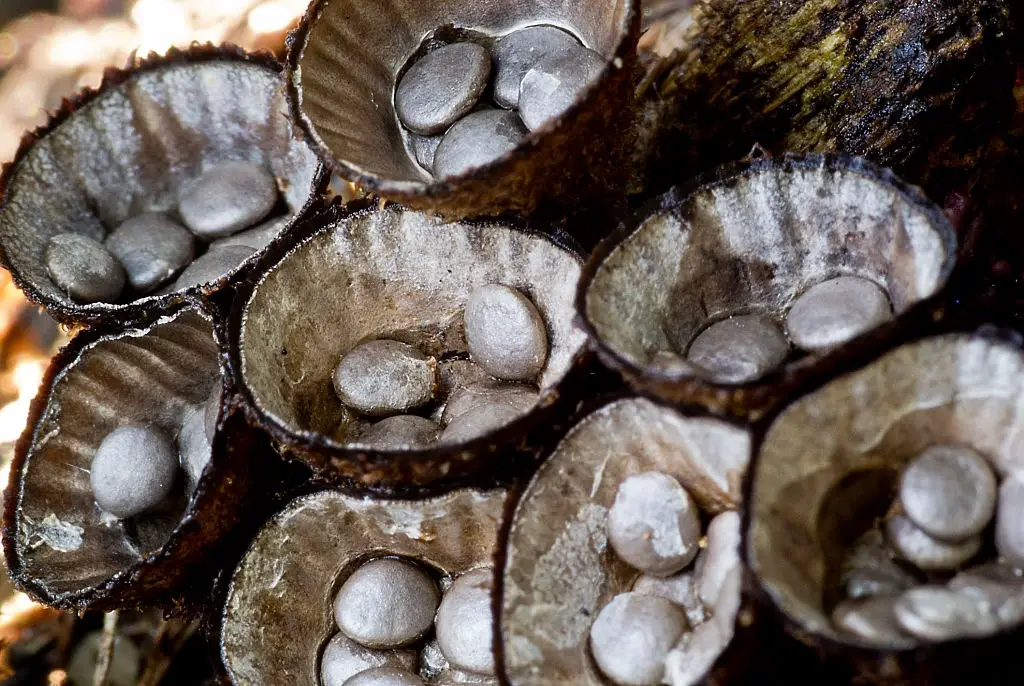
Birds nest fungi closely resemble tiny nests with eggs – exactly as their name suggests. Plants aren’t at risk from these fungi. This fungus will help you break down organic matter.
Birds’ nest fungus generally grows during the fall in gardens near moist, cool sites. Some mushrooms and fungi are not harmful, and the bird’s nest fungus is among them.
Some organisms only break down organic matter, while others may eat bacteria and other organisms made up of mulch. As long as they don’t harm your plants, you can just let them do their thing.
3. Mushrooms
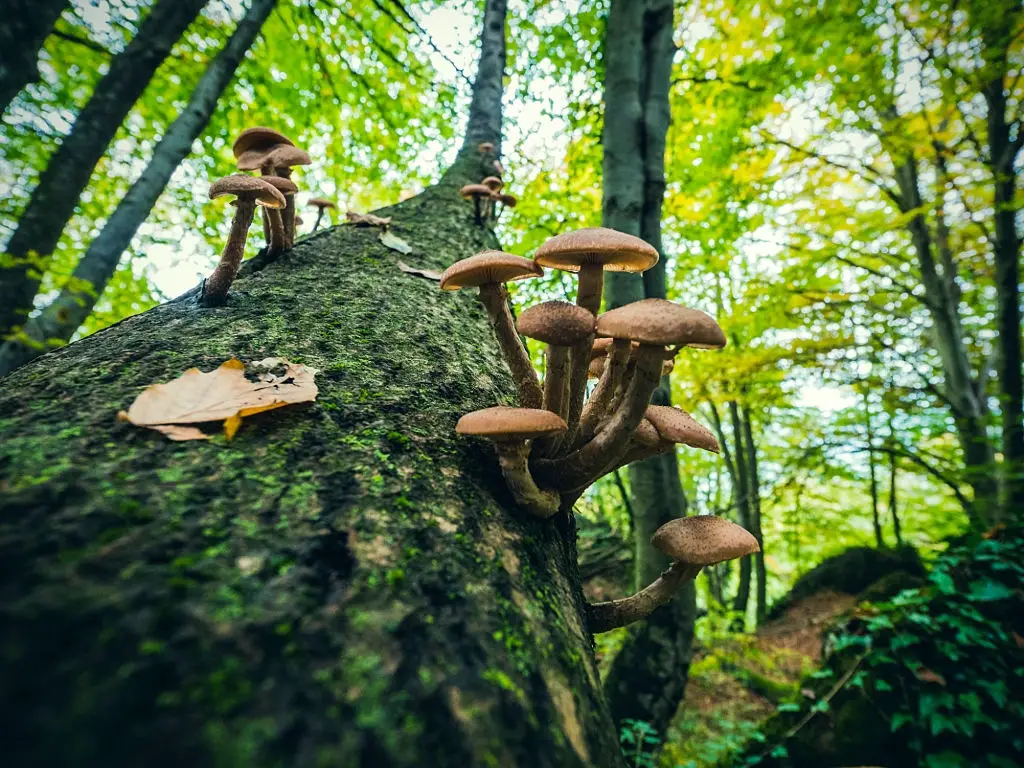
In the lawn and everywhere else you look, there are mushrooms. Among all types of fungi in garden beds, the mushroom is the most common. Mushrooms are classic umbrella-shaped organisms with a stem and cap.
Many mushrooms exist, and these fungal fruiting bodies can range from puffballs, jelly fungi, and much more. In mulch, mushroom-like fungi are found because they contain a lot of organic matter. However, usually, there is no threat to humans from the presence of this fungus.
4. Stinkhorns
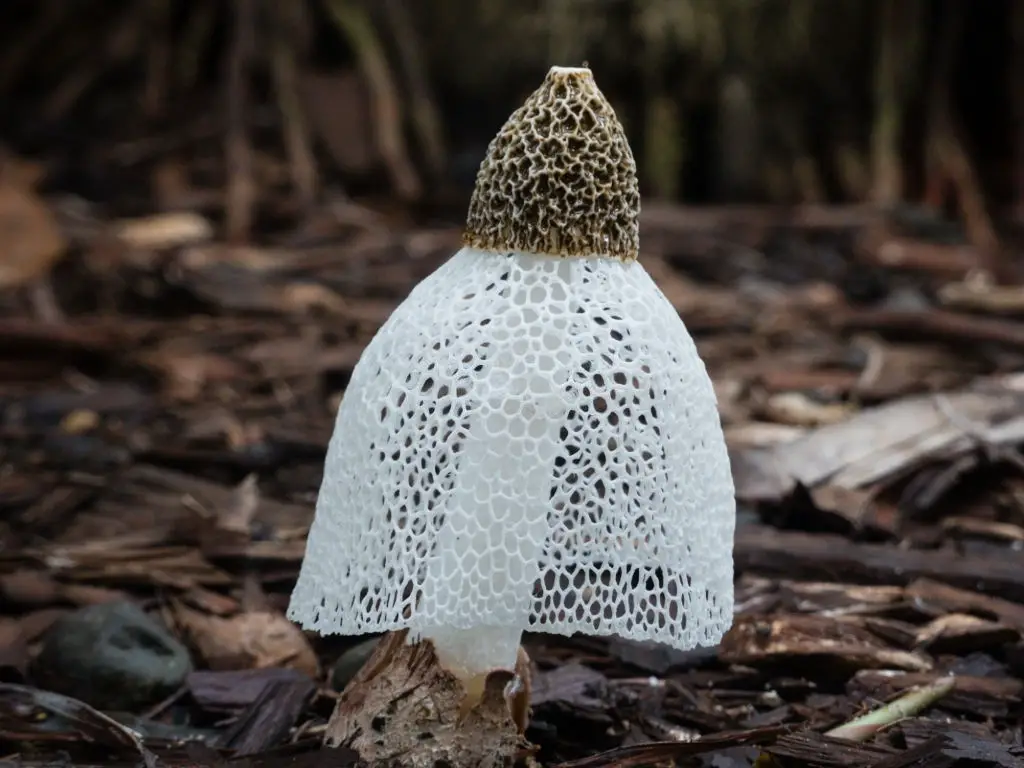
The odor is the most common indication that stinkhorns are present in mulch, other than the distinct coloration and shape similar to a Wiffle ball or an octopus. This kind of fungal beauty gets its name from the fact that it stinks.
Yet, the odor is purposeful – it attracts flies. Their presence is non-threatening. They don’t harm plants or cause disease. Moreover, they provide additional nourishment to plants near them due to the breaking down of organic material around them.
In temperate regions like Wisconsin, stinkhorn mushrooms are seen from the tropics. Mulch, lawns, and bare soil are common places for them to appear suddenly. Despite their stunning appearance, these fungi are nicknamed “the stinkies” because of their unappealing odor.
Even though stinkhorns are an unwanted addition to gardens, they do not harm plants. Stinkhorns can develop on dead organic material, beneficial to soil fertility and garden plants because they convert plant debris into nutrients.
5. Slime Molds
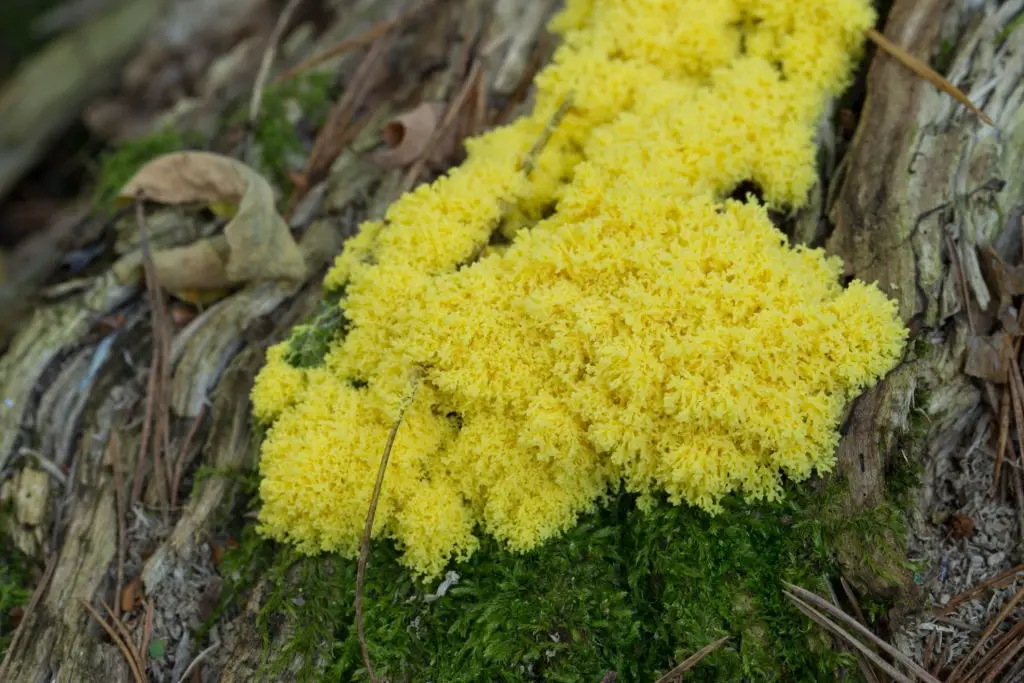
Usually, slime mold grows in small places in wet mulch or old, decaying wood. In addition to its bright colors, which may be the pink or orange, frothy appearance that resembles vomit, this substance can also be recognized by its sensation.
The slime mold fungus is commonly known as the “dog vomit” fungus for this very reason. Slime molds, like mushrooms and stinkhorns, pose no threat to your plants or the environment.
The organism is indeed rather unsightly; however, it helps clean up harmful pathogens and bacteria. Slime mold generally refers to several kinds of unrelated eukaryotic organisms that live as individual cells but can also aggregate and reproduce as multicellular structures.
The slime mold previously belonged to the kingdom of fungi but is no longer included there. Even though they are not monophyletic, they are classified as a paraphyletic group called Protista. The total number of slime mold species is over 900.
These organisms sometimes appear as gelatinous “slime” during part of their life cycles. The only macroscopically large slime molds are the Myxogastria. Although slime molds are usually small, some species may attain various square meters and weights of 20 kilograms.
Why Do Fungus and Mushrooms Grow in Mulch?
Mushrooms and fungus thrive in mulch because it is full of decaying matter. Various materials are commonly used as mulch, including wood chips, bark, pine straw, and even hay. Fungi love acidic substrates, all of which are created by these materials.
Therefore, you will wake up one day to find gray mushrooms growing in your mulch, even after receiving regular mulch refreshments. However, many methods are available that help to get rid of fungus and mushrooms in a mulch.
A garden fork or spade will also help remove all of the mushroom-affected mulch. The mulch can be either put on your compost pile if children cannot access the pile or directly in the trash if children can reach the pile.
If you are adding mulch to your compost pile, then mix the mulch with the compost and let the compost decay for a few months, turning it about every other month with a garden fork during that period.
Use the decayed compost to mulch the soil in your garden when the material is crumbly, dark, and free of white threads or mushrooms. However, before removing the fungus, you should first know whether it is unhealthy for the lawn or not.

